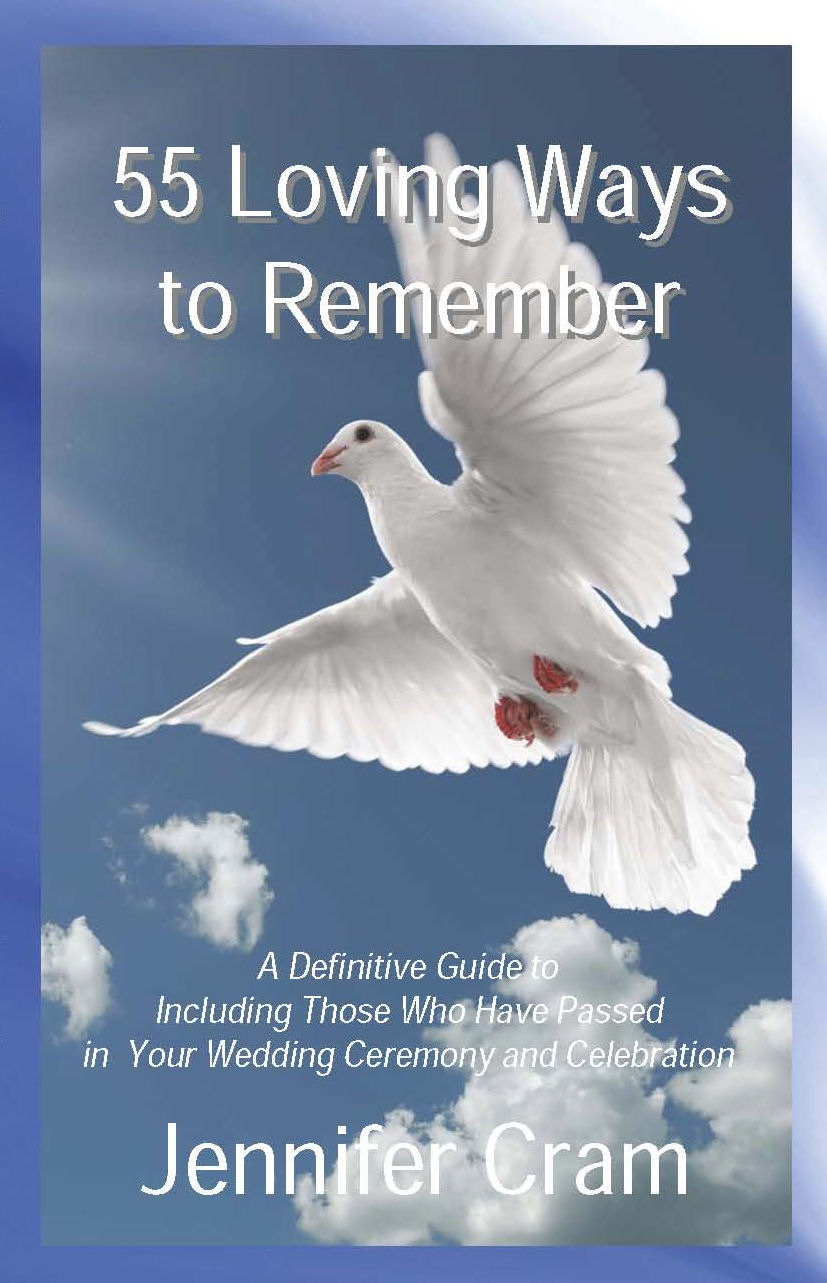How to Remember and Honour Deceased Loved Ones in your Wedding Ceremony
 Whether they are present at your wedding
or not, it is natural that your thoughts will be with
loved ones on the day because they are woven into
your lives in countless ways. Including them can help
you feel close to them on your big day.
Whether they are present at your wedding
or not, it is natural that your thoughts will be with
loved ones on the day because they are woven into
your lives in countless ways. Including them can help
you feel close to them on your big day.For this reason, the question of whether to invoke memories of loved ones is a very important issue for engaged couples, as is how to do so in the ceremony and the celebration that follows. While it is considered inappropriate to include deceased parents’ names on the invitations, there are many ways to remember and honour loved ones without impairing the joyous tone of the celebration.
It is, however, essential that you consider the emotional needs of everyone present because some people still feel uncomfortable with the idea and may try to talk you out of it.
Two ways to approach honouring
loved ones who have passed
- You can include a public acknowledgement during the ceremony or at the reception afterwards, or
- You can include your loved one in the ceremony in a private way that does not alert the guests.
Which approach you choose, and the specific way you choose to acknowledge those who have passed will depend on a number of things:
- What you, individually and as a couple, feel is appropriate to include in your wedding ceremony.
- What you, individually and as a couple, feel is appropriate to the personality and character of the loved one you wish to memorialise.
- How comfortable your guests will be with the type of memorial inclusion you are considering.
- How recently your loved one passed.
- How untimely, unexpected, or tragic the circumstances of your loved one’s passing were.
You should consult others who will be present before you decide how to acknowledge a loved one who was also important in their lives. You should also make your celebrant (officiant) aware of your intention. Remember that your celebrant (officiant) can be a valuable resource.
If you have any doubt about how you or your guests will react on the day err on the side of the caution, and choose a symbolic way to remember your loved one without overt or explicit acknowledgement. At heart, you are doing this for yourselves, so how you decide to include them your wedding ceremony and celebration is a personal decision. There is no right or wrong way.
Four types of acknowledgement
- Loving Tributes
- Memorial Rituals
- Memorial Releases
- Symbolic Remembrances
Loving Tributes
Memorial Rituals
Memorial Releases
Symbolic Remembrances
Further information
- You can find detailed guidelines for these and many more specific suggested ways to honour your loved ones in my book 55 Loving Ways to Remember: A Definitive Guide to Including Those Who Have Passed in Your Wedding Ceremony and Celebration. I provide a digital copy of it free to couples who have booked me as their celebrant.
Thanks for reading!
